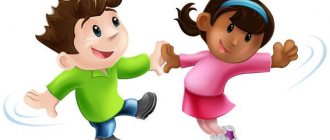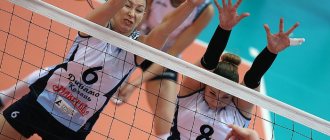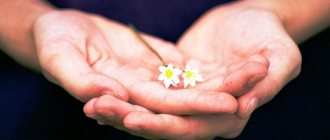Unusual ride
Children at this age have many different toys, including skateboards, roller skates, and scooters. Just for this competition you will need such transport. Well, when else will you have the opportunity to ride a scooter through the school corridors? Participants are divided into 3-4 teams with the same number of people. The first participants ride a scooter to the goal and back, place the scooter at the start next to the rest of the vehicles and stand at the end of the team, the second ride on a skateboard, the third on roller skates, the fourth again on a scooter, and so on. The team whose first participant ends up first again will win.
Who are you?
For this competition, the presenter prepares pictures of various prominent people with whom the children may be familiar from cartoons, stories, or personal interests. These can be pictures with portraits of scientists, artists, writers, poets, composers, actors, and so on. One by one, the presenter shows a portrait of a person, and the guys guess who it is. If it is difficult for children to guess, the presenter gives a hint by naming the type of activity or the first letters of the person’s name or surname. Whichever child guesses the most personalities will receive a prize.
Outdoor games for small spaces
Be precise!
In this case we mean a game with many variations. The main task is to demonstrate accuracy in a given test. Tests can be like this:
1. Controlling our muscles
. This will require a children's wrist dynamometer. The presenter sets the number that the arrow should reach when pressed.
We are accustomed to the fact that dynamometers are needed only to measure strength, but in this case we are not measuring strength, but the ability to control our muscles, that is, to accurately calculate our efforts. And this is coordination of movements. With the help of such game exercises, we not only compete and have fun, but also work on developing coordination of movements. The rules are simple - the presenter sets the desired number, and the child, without looking, tries to squeeze the dynamometer so that the arrow shows the desired number. All players try to press correctly, then the results are compared; whoever was closer wins.
Despite the fact that the dynamometer is a wrist dynamometer, you can squeeze it with both hands. Before you start using a dynamometer, you must first introduce the children to its structure, the approximate principle of operation, let them try it, check who has what strengths, so that the children know their absolute values, and from these results they can choose the ones they need for the game. For example, he did the maximum, and then, without looking, let him try to squeeze out half or even a quarter of his result, how will he succeed? The kids can have fun on their own by trying to hit the given numbers. They will ask themselves questions, and then they will try to achieve the desired result. The more practice they have, the better the guys will begin to cope with the task.
2. Let's try to remember time periods
. Let's start small - remember ten seconds. To do this, the presenter himself counts down these ten seconds to the guys for the first time (using a stopwatch, of course). Then he commands: “Attention, march!” and the guys are trying to count down these ten seconds themselves (not out loud, of course, to themselves, so as not to disturb the others). The one who has counted and decides that time is up raises his hand. When everyone raises their hands, the presenter announces the most accurate players. The longer the time period is set, the more difficult it is to remember it accurately and hit it by raising your hand. So training helps!
Since guys tend to spy on each other and focus on the actions of others, you can give the task to count the seconds with their eyes closed, and open them only by simultaneously raising their hand. The player who opens his eyes to look at the others is eliminated or is considered to have finished counting.
You can motivate children by asking them to practice this memorization themselves at home. If they become interested and want to win, they will probably practice. Everyone has a watch with a second hand. And with the proliferation of mobile phones that have stopwatches, this technical training task is becoming even easier.
Just for fun, when the guys are already well accustomed to this task, you can try giving them longer periods of time - ten, twenty, thirty minutes. For example, they started doing their homework, the countdown began, and whoever decided that the time was up reported it. The presenter reports that the specified time has passed, either when everyone has spoken, or two minutes after its end. So, if the set time was ten minutes, then the presenter says that the time is up in twelve minutes. Let's see who comes closest. We add two minutes for those who may be mistaken by one to one and a half minutes, but after the allotted time.
If in previous versions the presenter with a stopwatch counted the time and monitored the accuracy of the execution, then this time the child gets the stopwatch in his hands. And he will try to get to the right time without looking at the gadget. It is done like this: the child is given a certain time (10 seconds, 12, etc.), he closes his eyes, presses the button, then, when he decides that ten seconds have passed, turns off the stopwatch. Let's see how much the player made a mistake or how accurately he hit the target. It is advisable to give three attempts and record the best result. Then another player tries his hand and so on. At the end, all the results are compared and the winner is determined - the most accurate player.
When using this option, everything is measured very accurately and clearly, so that there will be no more disputes, and the player will not be guided by anyone; here, as they say, it’s a one-on-one fight with a stopwatch. And the presenter will not have to remember who made a mistake and how much (usually he selects only three or four of the most accurate ones). It's not so easy when there are more than ten players involved. In addition, now all players can be placed in order from first to last.
3. Calculating the force of pressure
. A bathroom scale will be required for this test. The task is basically the same as with a dynamometer, but now you need to calculate the force of pressure on the scales with your foot. The child stands with one foot on the floor and the other on the scale. Now his task is to press the scales to the desired weight. You need to choose comfortable numbers so that it is not so difficult to press, and so that the weight of the leg alone is not enough. Before competing, the kids need to be allowed to get used to it, let them try to push the scales, feel how much they need to push up to five kilograms, five and a half, etc. We compete in the same way, a certain weight is set, convenient for all players (so that it doesn’t work out, that for a big student it is enough to put his foot, and he has already missed by a couple of kilograms, and for a light student he still has to press and press to the required value), everyone, with their eyes closed or blindfolded, steps with one foot and presses on the scales. We record the results and compare them at the end. Whoever is closest wins.
4. Get to the point
. On the wall with chalk we draw various dots (crosses) at the level of the players’ hands, each dot gets its own number or a special design (star, cross, circle, dot, etc.; you can use small stickers, which can then be easily removed from the wall). The player’s task is to stand with his back to the wall and, on command, with his eyes closed, try to raise his straight arm so as to hit the desired point. Before the game, you can let the kids practice, let them watch and raise their hand, this way we help the muscles remember the required efforts, and the head understand to what degree the hand should be raised. Players take turns trying to hit the right spots; Whoever is more accurate wins.
Players can even play with each other themselves. One stands against the wall, looks at his partner, he commands him to what point he should raise his hand, and the first one tries to follow the instructions exactly. But this time the performing player does not close his eyes, but looks directly at his partner. In this position, it will be a little easier for the player, since the landmarks around us undoubtedly help, but still not as good as we would like.
To measure the accuracy of a hit, you can use a regular ruler. The player put his hand down and used a ruler to measure how many centimeters he missed. Or, using a protractor, the wall can be drawn with chalk lines of five to ten degrees, then it will be more convenient to measure misses in degrees. But if we draw with chalk on the wall, we can no longer lean against it. In this case, you will have to look like this, without touching.
5. Hit the spot with your foot
. Dots are drawn on the floor (or we use various stickers), but so that the child can reach them with his foot. The point at which the child should hit the toe is set. This time it is not at all necessary that the player keep his legs straight, so the points can be set next to the legs. You can play leaning against a wall or standing in the middle of the playing area; in the second case, the player receives greater freedom of action, which means more points that can be set.
6. Checking accuracy with a ball
. But now we must not hit some target, but must roll the ball so that it reaches a certain place, for example, a certain desk. That is, the player must roll the ball in the passage (between desks) to a certain desk, for example to the second. If the ball rolls too far or does not roll, then a miss is counted - since the desk is quite wide, the ball must fall at least a little into this space.
It is easy to change the game by placing students in a column or line, and giving the player the task of rolling the ball to a certain student.
It is not necessary to use large or medium rubber balls; small balls made of different materials can also be used.
7. Hit the right key
. We'll need a keyboard with an icon stuck to each key (cute little stickers work best). The child’s task is to learn to hit the desired key with his finger (of course, this must be done with his eyes closed). First, the child can practice on his own, and then the presenter will name the picture, and the child will try to hit it with his finger. Here you can agree in advance on how many keys you can miss: one or two (no more needed). With older children, you can use a regular keyboard; at the same time, let them learn how the letters are arranged on it; this skill will certainly be useful to them in life, considering how often modern people have to type. And most importantly, with the help of this game exercise, and at the same time competition and interest, we develop the children’s coordination of movements, motor memory, and ordinary memory (try to immediately remember where which pictures are located!).
To make the task even easier, you can highlight the keys by color in squares or rectangles, for example, fours (four keys of the same color are highlighted), sixes or eights. Then it will be easier for the guys - they are given a color, they try to get into this square or rectangle. Any key of a given color is hit - excellent, the hit is counted. Accordingly, you will have to select many colors, maybe even eight to ten.
Everyone can play together if there are enough keyboards for each player. Then everyone sits at their desks, the keyboards are on the table in front of them, the players hold their hands on their knees. The signal for action is the picture, letter (number) or color named by the leader. Players must quickly place their index finger (or any given finger) on the desired key. Whoever is faster gets one point. You can play for a while, and then sum up the results, looking at who scored how many points, and declare the winner. Penalty points can be awarded for pressing an incorrect key. An important condition: after the child puts his finger on the key, he can no longer change his decision. A change is a mistake that is “punished” with a penalty point.
To learn letters, numbers and symbols, you can play open-ended. That is, now the presenter calls a key, and the players must place their finger on it as quickly as possible. If there are many players involved, then in addition the player must raise his hand up, signaling that he has done everything. After this, you cannot move your finger or move it anywhere until the presenter checks whether he hit it correctly or not. After checking, the first player receives one point. It is advisable to go through all the letters and numbers in this way, and at the end calculate by points who knows the location of the letters and numbers on the keyboard best of all.
8. Catch the number
. Now we will use a stopwatch that the child can press to turn it on and off, stopping time. The meaning is simple: a time is set, for example 13 seconds. The player’s task is to look at the stopwatch and press it as accurately as possible. If we have a stopwatch with hundredths of seconds, then the error will be more noticeable, and then it will be easier to compare the results. This is not the same option when we memorized the time period. In this case, the speed of reaction to the number that appears is worked out.
It's fun to play together. The leader sets a time for the first child of the pair, for example fifteen seconds. The second player, at the command of the first, turns on the stopwatch, and then the first must tell the second in time when the stopwatch should be turned off. Under no circumstances should the first one give prompts, only dry commands - “march” and “stop”. All additional prompting words: “it’s still a long way off, don’t rush yet,” etc., as well as movements (pointing with a finger, nodding, etc.) are considered a clue, and the pair loses. First one commands, then the other. The time of their error is summed up. Then the remaining couples also try their hand, after which the results are compared, and the winner is announced.
From most to least
The guys are divided into teams with an equal number of people. Each team receives the same set of cards with different names, which will need to be arranged from largest to smallest using numbers. The team that is the fastest to correctly arrange the names from largest to smallest on all cards will win. As an example, the first card: ocean, Nile River, sea, lake, home pond, puddle; second card: watermelon, melon, orange, tangerine, feijoa, blueberry; third card: continent, country, region, city, village, district; fourth card: elephant, tiger, dog, mouse, ladybug, ant and so on.
What is missing
For this competition you need to print out pictures of various objects. The presenter will lay out the setting based on the pictures, and the students, in turn, will have to choose a picture from a bunch of other pictures (they can be placed on a separate board) and complement the setting created by the presenter. For example, like this: the leader lays out the situation from a picture of “grain”, a picture of “eggs”, a picture of “chicken coop”, the student must choose a picture of “chicken” and add it to the rest of the pictures, or like this: picture of “milk”, picture of “grass or field”, picture “shepherd”, the student finds the picture “cow” and adds to the rest, or like this: picture “tea in a cup”, picture “tea spoon”, picture “saucer”, the student finds the picture “cake or cake” and adds to the rest. All the children must cope with this task, so at the end the presenter praises everyone and gives the children sweet prizes.
Blitz tournament
While the children are enjoying aromatic tea and sweets, the presenter will take turns asking questions that need to be answered quickly. Whoever raised his hand first is the one who answers. For the correct answer - a point, and the most points - a prize. And the questions are completely simple, but require a little thought and understanding, for example: it can be put in tea or in a jar (lemon); friend of the stick (carrot); both the commander and the cake (Napoleon); It can be both sweet and medicinal (cotton wool); the baked goods that Carlson indulged in (buns); a youth expression when something doesn’t work out, and can also be sweet and with any filling (pancake) and so on.









